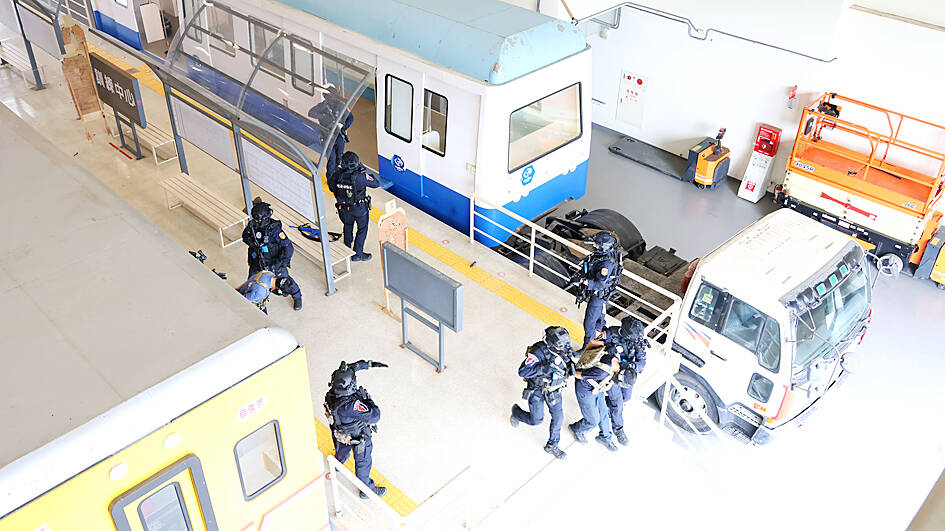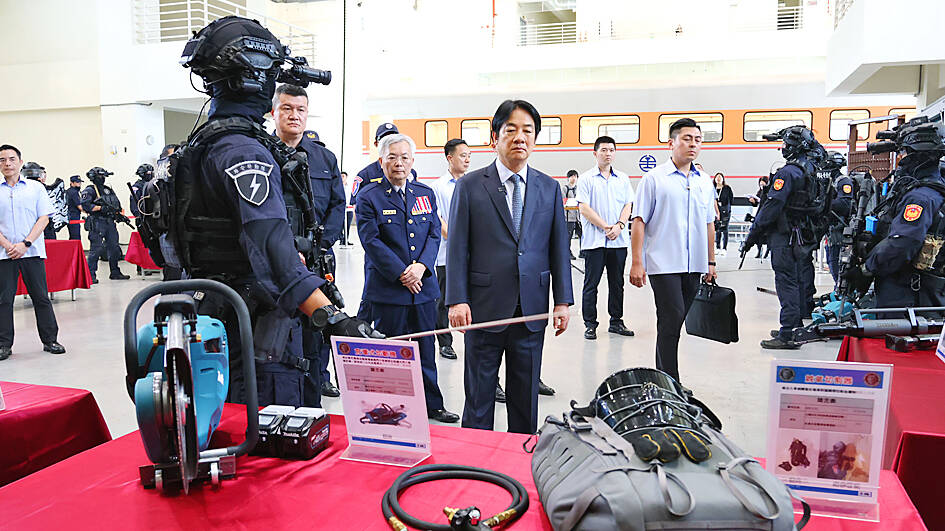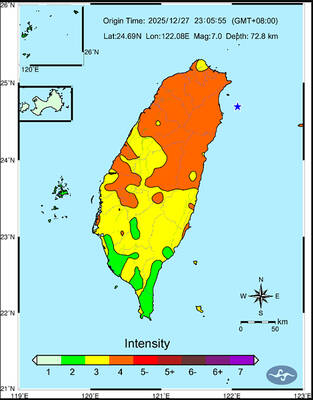The US Navy regularly conducts global war games to develop deterrence strategies against a potential Chinese invasion of Taiwan, aimed at making the nation “a very difficult target to take,” US Acting Chief of Naval Operations James Kilby said on Wednesday.
Testifying before the US House of Representatives Armed Services Committee, Kilby said the navy has studied the issue extensively, including routine simulations at the Naval War College.
The navy is focused on five key areas: long-range strike capabilities; countering China’s command, control, communications, computers, cyber, intelligence, surveillance, reconnaissance and targeting; terminal ship defense; contested logistics; and nontraditional maritime denial tactics, Kilby said.

Photo: Huang Cheng-chia, Taipei Times
The navy is investing in and experimenting with new technologies in these areas, Kilby said, adding that he recently met with Indo-Pacific Commander Admiral Samuel Paparo and Pacific Fleet Commander Admiral Stephen Koehler in San Diego to accelerate deployment.
Asked whether a US$13 billion aircraft carrier or uncrewed systems would be more useful for Taiwan’s defense, Kilby said he would prefer deploying drones in Taiwan.
“It’s a hard question to answer without qualifying questions, but if I could put those drones on Taiwan, I’d put them on Taiwan,” he said.

Photo: Huang Cheng-chia, Taipei Times
Also at the hearing, US Secretary of Defense Pete Hegseth faced pressure from US Representative Don Bacon, who called for faster arms deliveries to Taiwan, citing the urgent need for sea mines and other defense systems.
The Pentagon is no longer just reviewing the matter, but taking active steps, Hegseth said.
He acknowledged that while previous administrations have pledged to shift focus to the Indo-Pacific region, “the department had not put in place” those changes.
In related news, President William Lai (賴清德) yesterday visited a National Police Agency counterterrorism training center in Taoyuan’s Sinwu District (新屋).
Lai praised the agency’s Special Operations Group after watching a team of students go through drills and inspecting their weapons and equipment.
A new 75m indoor shooting range would be added to the center and is expected to be completed by the end of the year, the agency said.
Nearly 60 members of the Special Operations Group conducted two assault training drills, including breaching a door with a BearCat G2 armored vehicle and a hostage rescue drill that included a simulated helicopter rappel.
The hostage rescue drill also involved the use of stun grenades to neutralize “kidnappers.”
The Special Operations Group is an elite, important unit, Lai said.
In addition to counterterrorism operations, the unit carries out high-risk operations in major criminal cases and specialized missions such as countersabotage and anti-hijackings, he said.
No one hopes for such incidents to occur, but the more proactive training is, the more people would feel secure and the more capable the nation could be in responding to challenges, Lai said.

A magnitude 7.0 earthquake struck off Yilan at 11:05pm yesterday, the Central Weather Administration (CWA) said. The epicenter was located at sea, about 32.3km east of Yilan County Hall, at a depth of 72.8km, CWA data showed There were no immediate reports of damage. The intensity of the quake, which gauges the actual effect of a seismic event, measured 4 in Yilan County area on Taiwan’s seven-tier intensity scale, the data showed. It measured 4 in other parts of eastern, northern and central Taiwan as well as Tainan, and 3 in Kaohsiung and Pingtung County, and 2 in Lienchiang and Penghu counties and 1

FOREIGN INTERFERENCE: Beijing would likely intensify public opinion warfare in next year’s local elections to prevent Lai from getting re-elected, the ‘Yomiuri Shimbun’ said Internal documents from a Chinese artificial intelligence (AI) company indicated that China has been using the technology to intervene in foreign elections, including propaganda targeting Taiwan’s local elections next year and presidential elections in 2028, a Japanese newspaper reported yesterday. The Institute of National Security of Vanderbilt University obtained nearly 400 pages of documents from GoLaxy, a company with ties to the Chinese government, and found evidence that it had apparently deployed sophisticated, AI-driven propaganda campaigns in Hong Kong and Taiwan to shape public opinion, the Yomiuri Shimbun reported. GoLaxy provides insights, situation analysis and public opinion-shaping technology by conducting network surveillance

‘POLITICAL GAME’: DPP lawmakers said the motion would not meet the legislative threshold needed, and accused the KMT and the TPP of trivializing the Constitution The Legislative Yuan yesterday approved a motion to initiate impeachment proceedings against President William Lai (賴清德), saying he had undermined Taiwan’s constitutional order and democracy. The motion was approved 61-50 by lawmakers from the main opposition Chinese Nationalist Party (KMT) and the smaller Taiwan People’s Party (TPP), who together hold a legislative majority. Under the motion, a roll call vote for impeachment would be held on May 19 next year, after various hearings are held and Lai is given the chance to defend himself. The move came after Lai on Monday last week did not promulgate an amendment passed by the legislature that

AFTERMATH: The Taipei City Government said it received 39 minor incident reports including gas leaks, water leaks and outages, and a damaged traffic signal A magnitude 7.0 earthquake struck off Taiwan’s northeastern coast late on Saturday, producing only two major aftershocks as of yesterday noon, the Central Weather Administration (CWA) said. The limited aftershocks contrast with last year’s major earthquake in Hualien County, as Saturday’s earthquake occurred at a greater depth in a subduction zone. Saturday’s earthquake struck at 11:05pm, with its hypocenter about 32.3km east of Yilan County Hall, at a depth of 72.8km. Shaking was felt in 17 administrative regions north of Tainan and in eastern Taiwan, reaching intensity level 4 on Taiwan’s seven-tier seismic scale, the CWA said. In Hualien, the